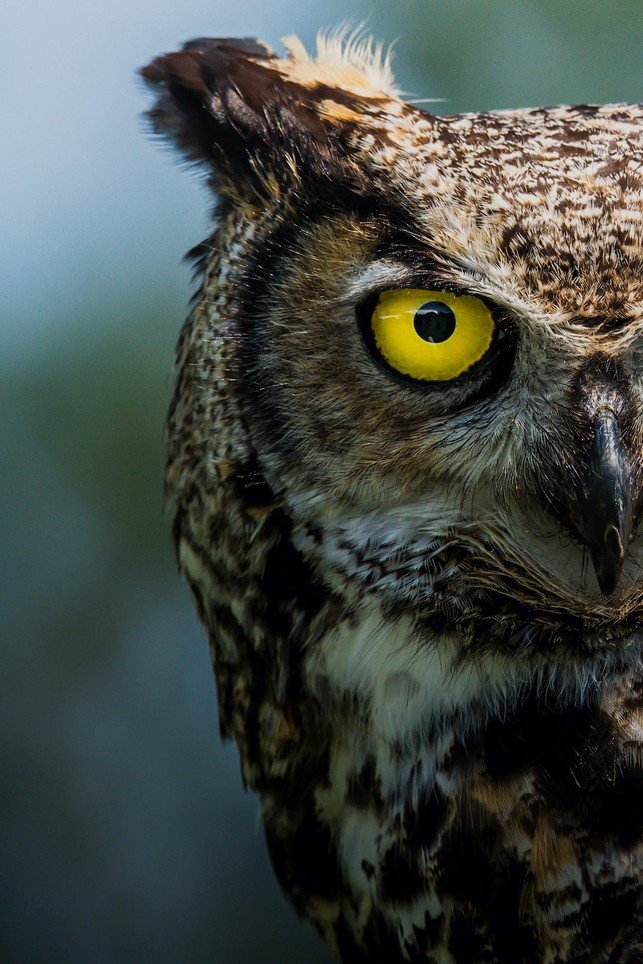Understanding the Age and Size at First Breeding in Various Owl Species
Category : Owl breeding and nesting | Sub Category : Age and size at first breeding in different owl species Posted on 2023-07-07 21:24:53

Understanding the Age and Size at First Breeding in Various Owl Species
Introduction:
The owls are known for their quiet flight, exceptional hunting skills, and nocturnal habits. It is interesting to look at the age and size of the birds at their first breeding endeavor. In this article, we will look at how different owl species differ in terms of sexual maturity and size in their reproductive success.
1 Sexual maturity and breeding age are related.
1.1 The earliest owl species to reach sexual maturity are the Burrowing Owl (Athene cunicularia), which can be found at 10 and 12 months old. Birds that become adults are known for their enthusiastic breeding behaviors.
1.2 The Great horned Owl and the Snowy Owl are larger owls that take a long time to reach reproductive maturity. They start breeding at 2 and 4 years old, allowing for more time to establish territories and acquire hunting skills.
2 Size and reproductive success are important.
2.1 Research shows that owls with larger bodies have a better chance of breeding. Good physical condition and a well-developed body are important for owls to find mates and raise healthy offspring. Larger owls have better access to prey resources which can impact their reproductive success.
2.2 Competition can be good for territorial disputes and defense against invaders. The quality of the owls' breeding habitats increases with larger owls like the Eurasian Eagle-Owl.
3 There are exceptions and variations.
3.1 There are exceptions to the general trend of owl species. The age and size of owls can be influenced by individual variation within populations and environmental factors.
3.2 Environmental factors, such as food availability or extreme weather conditions, can delay the breeding of the Northern Saw-whet Owl. The postponements ensure that offspring have a better chance of survival.
Conclusion
Understanding the age and size of different owl species in their first breeding attempts provides valuable insights into their reproductive strategies and the evolutionary pressures they face. It is important to consider individual variation and environmental factors when choosing an owl species. We can gain a deeper appreciation for owls by studying their reproductive behaviors.
Leave a Comment:
SEARCH
Recent News
- Zurich, Switzerland is not only known for its picturesque landscapes and vibrant culture but also for its diverse wildlife. While the city may be more commonly associated with its financial sector and luxury shopping, there are some rare and fascinating animals that call Zurich home.
- YouTube Content Creation: Showcasing Rare Animals through Translation
- If you are a nature enthusiast and love learning about rare and exotic animals, there are several YouTube channels dedicated to showcasing these fascinating creatures in their natural habitats. These channels provide a unique opportunity to educate yourself about lesser-known species and the importance of conservation efforts.
- The Importance of Developing Rare Skills Like a Rare Animal in the Workplace
- Women in Politics: Breaking Barriers and Making History
- Warsaw, the capital city of Poland, is not only known for its rich history and beautiful architecture but also for its unique and diverse wildlife. Despite being a bustling urban center, Warsaw is home to some rare and fascinating animals that can be found in various parks, forests, and reserves in and around the city.
- Vietnam is a country known for its rich culture, beautiful landscapes, and delicious cuisine. However, it is also home to a variety of rare and endangered animals that are found nowhere else in the world. In recent years, some Vietnamese businesses and companies have taken initiatives to help protect these precious species and their habitats.
- Vienna, the capital city of Austria, is known for its rich history, stunning architecture, and vibrant cultural scene. But did you know that Vienna is also home to a variety of rare and interesting animals? From exotic species at the Vienna Zoo to elusive wildlife in the surrounding countryside, there are plenty of fascinating creatures to discover in and around this beautiful city.
READ MORE
2 months ago Category : owlo

Zurich, Switzerland is not only known for its picturesque landscapes and vibrant culture but also for its diverse wildlife. While the city may be more commonly associated with its financial sector and luxury shopping, there are some rare and fascinating animals that call Zurich home.
Read More →2 months ago Category : owlo

YouTube Content Creation: Showcasing Rare Animals through Translation
Read More →2 months ago Category : owlo

If you are a nature enthusiast and love learning about rare and exotic animals, there are several YouTube channels dedicated to showcasing these fascinating creatures in their natural habitats. These channels provide a unique opportunity to educate yourself about lesser-known species and the importance of conservation efforts.
Read More →2 months ago Category : owlo
